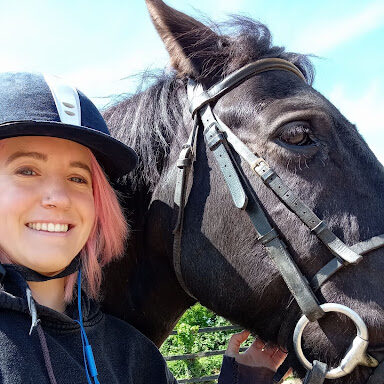Horse riding is an art of balance, communication, and partnership. It requires a unique combination of strength, stability, and mobility. As riders, we strive to be stable enough to sit tall in the saddle yet mobile enough to move fluidly with our horse. It’s a delicate balance, and one that strength training can help us master.
Stability and Mobility: A Delicate Balance
When we talk about being both stable and mobile, it might seem like a contradiction. But in horse riding, these two qualities are not only compatible but essential. To be stable is to have control over your body — to engage your core, maintain posture, and resist unnecessary movement. To be mobile is to flow with your horse’s movements, allowing your hips and body to follow their rhythm without becoming stiff or rigid.
Imagine sitting tall in the saddle. Your back is straight, your shoulders are relaxed, and your core is engaged. Now, as your horse moves through a trot or a canter, your hips must move with them, absorbing the motion and maintaining rhythm. If you’re stiff and tense, this movement becomes uncomfortable for both you and your horse. Conversely, if you’re too loose and bouncing around, you’re sending mixed signals and disrupting your horse’s balance. The key is finding that sweet spot between control and flow.

The Impact of Tension on Your Horse
Horses are incredibly sensitive animals. They can feel the slightest shift in your weight, the tension in your muscles, and the energy you bring into the saddle. If you’re tense and rigid, this tension transfers to your horse, restricting their movements and making it harder for them to perform naturally. On the other hand, a rider who is balanced and controlled helps their horse move freely and with confidence.
Think of it like dancing with a partner. If one partner is stiff and unyielding, the dance becomes awkward and disconnected. But when both partners move with strength and fluidity, the result is harmonious and beautiful. Horse riding is much the same, and the rider’s physical conditioning plays a pivotal role in achieving this harmony.
How Strength Training Can Help
Strength training is a powerful tool for riders. It builds the muscles needed to maintain stability while improving the mobility required to move with your horse. By focusing on specific types of exercises, riders can develop the control and balance necessary for effective riding.
1. Single-Leg Movements
Single-leg exercises, such as lunges, split squats, and step-ups, are excellent for riders. These movements mimic the imbalances we face in the saddle, where one side of our body may need to work harder than the other. Single-leg training helps address these imbalances, strengthens weaker sides, and improves overall balance.
For example, lunges not only build strength in your legs but also challenge your core as you work to maintain stability. This translates directly to the saddle, where we often need to stabilise ourselves on a moving, uneven surface.
2. Core Stability with Movement
The core is the foundation of a rider’s strength. Isometric core exercises that also incorporate movement, like plank variations or Pallof presses, are particularly effective. These exercises train your core to resist unwanted movement while allowing controlled motion in other parts of your body.
For instance, a side plank with a hip dip challenges your obliques to stabilise your torso while your hips move. This type of control is essential for maintaining your seat and posture during dynamic movements like transitions or lateral work.

Awareness: The Missing Piece
Physical training is vital, but so is mental awareness. As riders, we often focus so much on our horse’s performance that we forget to pay attention to our own bodies. Do you know what your body is doing as you rise and sit during a trot? Can you feel the muscles engaging during a canter transition?
Developing this awareness takes practice, but it’s incredibly rewarding. Next time you’re in the saddle, take a moment to notice how your body feels. Are your shoulders relaxed? Is your core engaged? Can you feel your hips moving with your horse? This kind of mindfulness not only improves your riding but also deepens your connection with your horse.
Putting It All Together
Strength training and body awareness go hand in hand. By building stability and mobility through targeted exercises, and by paying attention to how your body moves and feels, you can become a more effective and harmonious rider. Your horse will thank you for it, too.
Remember, the goal isn’t perfection. Every rider has a weaker side, and every rider has moments of tension. But with consistent effort, you can improve your ability to stay balanced, controlled, and in sync with your horse. After all, riding is a partnership, and the stronger and more aware you are, the better you can support your equine partner.
So, the next time you head to the gym, think of it as training not just for yourself but for your horse. A strong, balanced rider makes for a happy, free-moving horse. And isn’t that what we’re all striving for?



Share
Your subscription is 100% Free for our first year, No credit card details required.

The Judging Concerns That Keep Coming Back — And Why They Can’t Be Ignored Anymore We didn’t make it to

There are few sporting events that live up to the hype. Wimbledon? Too many strawberries. Cheltenham? Too many suits. But

British Veterinary Association publishes full response to Competition and Markets Authority’s proposed remedies for veterinary market for household pets. The